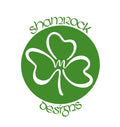


So in true Lettermen fashion here are my top ten cutting board tips.
1. Don’t be afraid to screw up. I have a bin for my screw ups. In fact I tried something yesterday and it was a total disaster. I have several of my screw ups laying around the house that we use on the daily. A perk of this is that I get to see what long term use of board does to the board itself.
2. When doing an end grain board you have to account for the thickness of the board prior to the flip. An easy way to figure this out is to measure the length of your board prior to its final flip, then divide by your desired thickness (add a little extra for flattening purposes, not much but a little.) This will give you the number of pieces you will have to flip. Then, multiply by the present thickness of the board, this will give you the rough length of your final product. Note you will need to account for the saw blade thickness, but I don't dwell on this too much I am just trying to estimate things so round measurements work.
3. Make sure your strips align nicely before glue up. I am talking about the seam of wood, you shouldn't be able to see any daylight between the pieces. Not the end of the world if there is a gap after glue up and planing, that’s what glue and sawdust are for.
4. Titghtbond 3. You see it in pretty much every video and there is a reason for it.
5. Sanding takes time. A LOT of Time. Put music on and just do it. You will thank yourself for it when you are looking at your finished product.
6. When doing an end grain board, sanding takes even longer. Even when you use a router sled, it takes time. In addition, sanding epoxy takes even longer. When you start sanding epoxy, your afternoon is pretty much a write-off. Yes you can run an epoxy board through the planer, but it makes me cringe whenever I do, and I might as well just go buy a new set of blades for the planer for after.
7. Padauk is a great wood. It looks awesome, but be ready for red EVERYWHERE in your shop. It looks like Mars invaded your shop and sprinkled Elmo dandruff everywhere.
8. Use whatever hardwood you want. There are lots of purists that say walnut maple and cherry are the only woods that should be in a cutting board, but I feel this really limits creativity.
9. Don’t mix end grain and edge grain when gluing pieces together. It can be done sometimes, and you may get away with it, but it really sucks when you ignore this and then a day or so later there is a crack in the wood. My “apple pie” weave board is an example of this.
10. Have fun, enjoy it, and be creative. At this point in my woodworking journey I have developed a few of the basic techniques, and I find that I like to challenge myself by thinking what if I made a cut here, or might this pattern be better if I do this?
Ps: My bonus tip. Purple Heart smells like zebra farts and Black Limba smells like elephant farts whenever you are cutting or planing either of them. When my wife comes out to the shop after I have been cutting it she looks at me, and I say yep...zebra farts.

1 comment
It does smell like zebra farts.